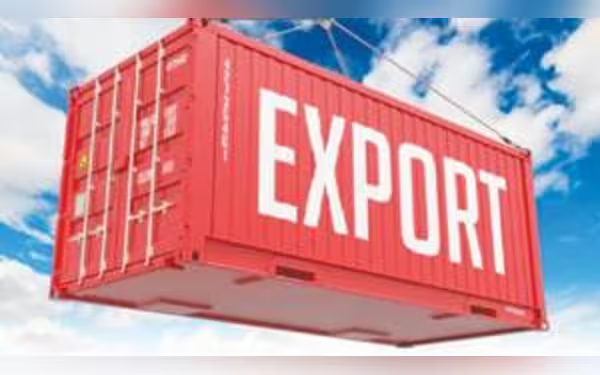Thursday, November 7, 2024 03:25 AM
BMP Calls for Structural Reforms to Boost Pakistan's Exports
- Exports rose to Rs790.12 billion in September 2024.
- Trade deficit widened to $1.83 billion, highlighting economic challenges.
- Structural reforms are essential for sustainable export growth.
 Image Credits: nation_pk
Image Credits: nation_pkBMP emphasizes the need for structural reforms to enhance Pakistan's exports amid rising trade deficit and economic challenges.
In recent months, Pakistan's export landscape has shown a glimmer of hope, with September 2024 witnessing exports amounting to Rs790.12 billion, a slight increase from Rs769.4 billion in August 2024. This nominal rise of 2.69 percent, however, comes amidst a backdrop of significant economic challenges. The Federation of Pakistan Chambers of Commerce and Industry (FPCCI)’s Businessmen Panel (BMP) has emphasized that while this uptick is encouraging, it is far from sufficient to ensure sustainable economic growth.
Mian Anjum Nisar, the BMP Chairman and former FPCCI president, has voiced concerns regarding the government’s ability to meet ambitious industrial growth and export targets. He pointed out that the current economic climate, characterized by low export growth and mounting fiscal pressures due to heavy interest payments, poses a serious threat to the country’s foreign exchange reserves. Nisar urged the government to tackle the underlying structural vulnerabilities, particularly by ensuring a smooth energy supply at competitive rates, as the overall export proceeds continue to dwindle.
According to the latest trade data, Pakistan's trade deficit for September 2024 stood at $1.83 billion, reflecting a 3.39 percent increase from the previous month. This widening trade deficit, which has surged by 20.69 percent compared to September 2023, underscores the pressing need for comprehensive reforms. Exports rose by 2.82 percent to $2.84 billion, while imports also increased by 3.61 percent to $4.67 billion, indicating a complex interplay between domestic production issues and global demand fluctuations.
The main commodities driving exports in September 2024 included knitwear, readymade garments, and bed wear, with knitwear alone contributing Rs124.743 billion. On the import side, petroleum products and natural gas dominated, highlighting the country’s reliance on foreign energy sources. The increase in imports, coupled with a decline in exports, has led to a precarious trade balance, which may stabilize or improve in the coming months if current trends continue.
Nisar pointed out that the low textile and clothing exports are a long-standing issue, exacerbated by high energy costs, delayed refunds, and a slump in global demand. He attributed part of the problem to exchange rate instability and the government’s decision to discontinue duty drawbacks on local taxes, which has created liquidity challenges for exporters. Furthermore, the recent hikes in gas and electricity tariffs, alongside the phasing out of subsidies, are expected to further inflate production costs.
Despite these challenges, there are signs of cautious optimism. The government has made strides in managing the fiscal deficit and maintaining a surplus in the primary balance, thanks to effective fiscal management. The State Bank of Pakistan is also implementing a contractionary monetary policy to curb inflationary pressures, although much of the current price volatility is linked to supply-side factors.
Looking ahead, Mian Anjum Nisar has called for significant structural reforms to enhance exports, urging the government to engage with the business community, the true stakeholders in policy formulation. As part of its agreement with the International Monetary Fund (IMF), the government has announced the discontinuation of energy subsidies for the export sector, a move that could have far-reaching implications.
In a recent meeting of the National Export Development Board, the Prime Minister set an ambitious target of raising the country’s annual exports to $60 billion within three years. This goal, while lofty, reflects a commitment to revitalizing the export sector, which crossed the $30 billion mark in the previous fiscal year. The government’s focus on boosting IT exports, which surpassed $3.2 billion, is a step in the right direction.
While the recent increase in exports is a positive sign, it is clear that Pakistan's economy requires substantial structural reforms to achieve sustainable growth. The collaboration between the government and the business community will be crucial in navigating the challenges ahead and unlocking the full potential of the export sector. Only through concerted efforts can Pakistan hope to stabilize its economy and enhance its position in the global market.













